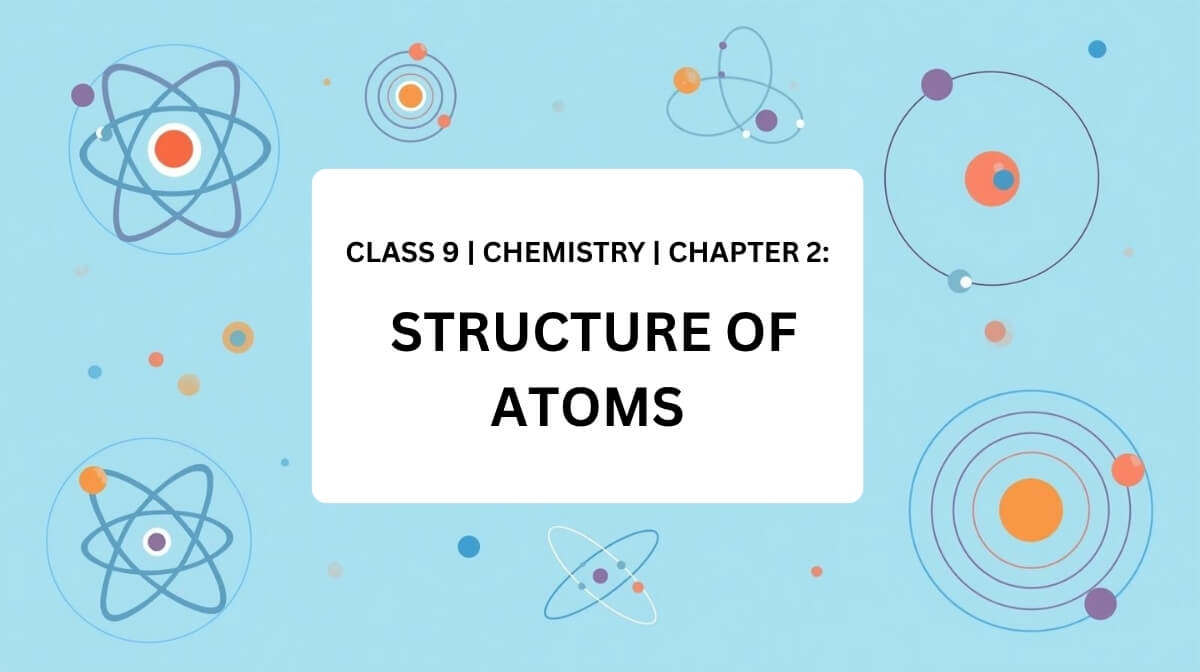Understanding the structure of atoms is essential to studying chemistry. This chapter explains subatomic particles, atomic number, mass number, isotopes, electronic configuration, and related concepts. These Class 9 Chemistry Chapter 2 MCQs will help students review key ideas clearly and effectively.
1. Who proposed the concept of indivisible atoms?
- A. John Dalton ✅
- B. J.J. Thomson
- C. Rutherford
- D. Niels Bohr
Explanation: Dalton’s Atomic Theory suggested that atoms are indivisible and the smallest unit of matter.
2. What is the relative charge of a neutron?
- A. +1
- B. –1
- C. 0 ✅
- D. +2
Explanation: Neutrons have no electrical charge and are neutral particles in the nucleus.
3. The atomic number of an element is equal to:
- A. Number of neutrons
- B. Number of protons ✅
- C. Number of electrons + protons
- D. Number of shells
Explanation: Atomic number is defined as the number of protons in the nucleus of an atom.
4. Isotopes are atoms of the same element with:
- A. Different atomic numbers
- B. Different mass numbers ✅
- C. Different numbers of protons
- D. Same number of neutrons
Explanation: Isotopes have the same number of protons but different numbers of neutrons, leading to different mass numbers.
5. The model in which electrons revolve in specific orbits around the nucleus was proposed by:
- A. Rutherford
- B. Niels Bohr ✅
- C. J.J. Thomson
- D. Dalton
Explanation: Bohr’s Model introduced quantized energy levels where electrons revolve without radiating energy.
6. What is the maximum number of electrons that can be accommodated in the second shell?
- A. 2
- B. 8 ✅
- C. 18
- D. 32
Explanation: The 2nd shell (L-shell) can hold up to 8 electrons according to the 2n² rule.
7. The sum of protons and neutrons in an atom gives:
- A. Atomic number
- B. Mass number ✅
- C. Atomic mass unit
- D. Charge number
Explanation: Mass number = Number of protons + Number of neutrons.
8. The particle discovered by J.J. Thomson is:
- A. Electron ✅
- B. Proton
- C. Neutron
- D. Alpha particle
Explanation: J.J. Thomson discovered the electron through cathode ray experiments.
9. Which subatomic particle determines the chemical properties of an element?
- A. Neutron
- B. Electron ✅
- C. Proton
- D. Nucleus
Explanation: Electrons, especially those in the outermost shell, control an element’s reactivity.
10. Which element’s isotope is used for cancer treatment?
- A. Carbon-14
- B. Cobalt-60 ✅
- C. Uranium-235
- D. Iodine-131
Explanation: Cobalt-60 is a radioactive isotope used in radiotherapy for treating cancer.

